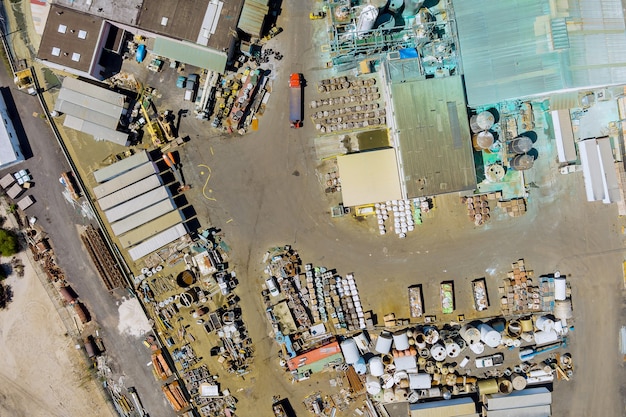Improve Recycling Rates in the US: Challenges and Solutions

Improving recycling rates in the US requires addressing challenges like contamination, lack of standardization, and limited infrastructure through strategies such as enhanced public education, investment in modern recycling technologies, and the implementation of consistent nationwide recycling programs.
The United States has long grappled with relatively low recycling rates compared to other developed nations. How can we improve recycling rates in the US? An analysis of current challenges and potential solutions is essential to fostering a more sustainable future for the nation. Let’s explore the key obstacles and innovative approaches that can turn the tide toward a greener, more environmentally responsible America.
Understanding the Current State of Recycling in the US
Recycling in the United States faces a complex landscape of varying regulations, infrastructure limitations, and public engagement challenges. To effectively improve recycling rates, a thorough understanding of the current recycling ecosystem is necessary. This includes examining collection methods, processing technologies, and the economic factors influencing the recycling industry.
The Patchwork of Recycling Programs
One of the most significant challenges in US recycling is the lack of a standardized national program. Recycling regulations and practices vary widely from state to state, and even city to city.
Contamination Woes
Contamination occurs when non-recyclable items are mixed with recyclable materials, reducing the quality and marketability of the recycled goods. This is a persistent issue that affects the efficiency and cost-effectiveness of recycling programs.

To address these problems, consider the following actions:
- Implement standardized recycling guidelines across all states to reduce confusion and increase participation.
- Invest in advanced sorting technologies, such as optical sorters and AI-driven systems, to improve the removal of contaminants.
- Conduct extensive public education campaigns to inform citizens about proper recycling practices and the impact of contamination.
The current state of recycling in the US needs major improvements in order to properly handle the enormous amount of waste being produced. By focusing on standardization, investment and education, the USA can move towards a more successful path in recycling.
The Economic Barriers to Higher Recycling Rates
The economics of recycling play a critical role in determining its viability and success. Economic barriers such as fluctuating commodity prices, high processing costs, and limited demand for recycled materials can significantly hinder recycling efforts. Addressing these economic challenges is essential to creating a sustainable and thriving recycling industry.
The Volatile Market for Recycled Materials
The market demand for recycled materials, such as paper, plastic, and metal, can fluctuate significantly based on global economic conditions and consumer preferences. This volatility can make it difficult for recycling facilities to maintain profitability.
Costly Collection and Processing Infrastructure
Setting up and maintaining efficient recycling programs requires substantial investment in collection vehicles, sorting facilities, and processing equipment. These high costs can become barriers, especially for smaller communities and rural areas.
- Provide financial incentives, such as tax breaks and subsidies, to support recycling facilities and promote investment in new technologies.
- Implement extended producer responsibility (EPR) programs, which hold manufacturers accountable for the end-of-life management of their products.
- Develop public-private partnerships to leverage resources and expertise from both the public and private sectors.
Overcoming economic barriers opens new opportunities in the recycling field. Investments in financial support and producer responsibility can help reduce waste.
Technological Innovations in Waste Management
Technological progress holds immense potential for revolutionizing waste management practices. From advanced sorting technologies to waste-to-energy conversion processes, these innovations can significantly enhance the efficiency and effectiveness of recycling programs.
One area, among many, of important investments are the investments in infrastructure.
Advanced Sorting Technologies
Modern recycling facilities utilize cutting-edge technologies, such as optical sorters, robotic arms, and AI-driven systems, to efficiently separate different types of recyclable materials. These technologies can dramatically improve the accuracy and speed of sorting processes.
Waste-to-Energy Conversion
Waste-to-energy (WTE) technologies convert non-recyclable waste into valuable energy resources, such as electricity and heat. This process can help reduce landfill waste while generating clean energy.

Improving technology is important in this field. Here are some ways to improve the tech:
- Invest in research and development to advance waste-to-energy technologies and make them more efficient and environmentally friendly.
- Incorporate smart waste management systems, such as sensor-equipped bins and real-time monitoring platforms, to optimize collection routes and reduce costs.
- Develop mobile apps and online platforms that provide consumers with information on local recycling programs, accepted materials, and drop-off locations.
The recycling business is an important sector to receive financial investments due to the potential growth it can have. By innovating constantly, the US can become a model of how to properly deal with waste materials.
The Role of Public Education and Awareness
Raising public awareness and promoting responsible recycling habits is crucial for improving recycling rates. Effective public education campaigns can inform citizens about the benefits of recycling, proper sorting techniques, and the impact of contamination.
Targeted Education Campaigns
Tailoring educational campaigns to specific demographics and communities can significantly improve their effectiveness. Using targeted messaging and channels ensures that the right information reaches the right people.
Community Engagement Programs
Community-based recycling initiatives, such as neighborhood recycling drives and educational workshops, can foster a sense of ownership and responsibility among residents.
These programs can include:
- Launch comprehensive public education campaigns that utilize various media channels, including social media, television, and print, to reach a broad audience.
- Partner with schools and community organizations to integrate recycling education into the curriculum and promote responsible waste management practices.
- Organize community events, such as recycling workshops and clean-up drives, to engage residents and foster a sense of environmental stewardship.
Public education is key to the success of recycling efforts. By promoting responsible recycling habits, communities can help improve recycling rates and protect the environment.
Policy and Legislation to Support Recycling
Government policies and legislation play a vital role in supporting and incentivizing recycling efforts. Implementing effective regulations, providing financial incentives, and setting ambitious recycling targets can drive significant improvements in recycling rates.
Mandatory Recycling Laws
Mandatory recycling laws require individuals and businesses to participate in recycling programs. These laws can be highly effective in increasing recycling rates and reducing landfill waste.
Incentives for Recycling
Providing financial incentives, such as tax breaks and rebates, can encourage individuals and businesses to adopt sustainable recycling practices.
These policies can be improved by:
- Enact comprehensive recycling legislation that includes mandatory recycling laws, extended producer responsibility (EPR) programs, and ambitious recycling targets.
- Provide financial incentives, such as tax credits and grants, to support recycling facilities, promote innovation, and encourage the use of recycled materials.
- Implement stricter regulations on waste disposal and landfill management to discourage unsustainable practices and promote recycling as a preferred option.
Government plays an important part in providing the correct support. Policy and Legislation is something that needs to be improved for these improvements to happen.
International Best Practices in Recycling
Examining recycling practices in countries with high recycling rates can provide valuable insights and lessons for the United States. Learning from international best practices can help identify effective strategies and policies that can be adapted and implemented in the US context.
Germany’s Deposit Refund System
Germany’s deposit refund system, known as “Pfand,” requires consumers to pay a small deposit on beverage containers, which is refunded when the container is returned for recycling. This system has significantly increased recycling rates and reduced litter.
Sweden’s Waste Management Hierarchy
Sweden follows a waste management hierarchy that prioritizes waste prevention, reuse, recycling, energy recovery, and disposal, in that order. This approach encourages a holistic and sustainable approach to waste management.
Here are some things to consider:
- Study and adapt successful recycling programs from other countries, such as Germany’s deposit refund system and Sweden’s waste management hierarchy.
- Implement similar policies and regulations in the US to incentivize recycling and promote sustainable waste management practices.
- Collaborate with international organizations and governments to share knowledge and best practices on recycling and waste reduction.
Studying successful examples from other countries is a great method to use when evaluating recycling practices. This can easily lead to positive, measurable results.
| Key Point | Brief Description |
|---|---|
| ♻️ Standardization | Uniform recycling guidelines enhance efficiency. |
| 💰 Investment | Financial support boosts recycling infrastructure. |
| 📚 Education | Public awareness improves participation. |
| 🌍 Best Practices | Learning from global recycling leaders. |
Frequently Asked Questions (FAQ)
▼
Lower rates are due to a lack of standardization, contamination issues, and insufficient investment in modern recycling technologies. Differing local regulations also complicate matters.
▼
Contamination reduces the quality of recycled materials, making them less marketable. It also increases processing costs and can damage recycling equipment.
▼
EPR holds manufacturers responsible for managing the end-of-life of their products. This encourages them to design products that are easier to recycle and less wasteful.
▼
Effective strategies include targeted campaigns using social media, school programs. Community events and clear guidelines on what and how to recycle are also important!
▼
Advanced sorting technologies, such as optical sorters and AI-driven systems, can improve the efficiency and accuracy of sorting recyclable materials, reducing contamination.
Conclusion
Improving recycling rates in the US requires a multi-faceted approach. By addressing challenges through enhanced public education, financial backing, and the implementation of consistent programs and policies, the USA can create a system that prioritizes reusing material and reducing overall waste.





